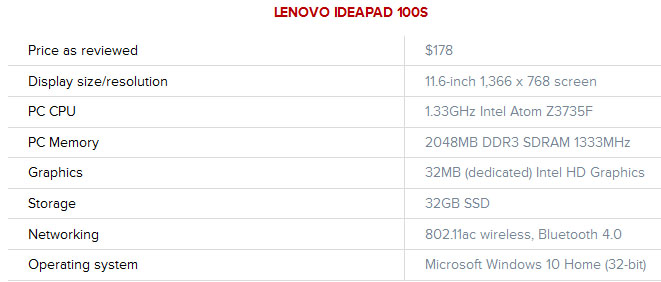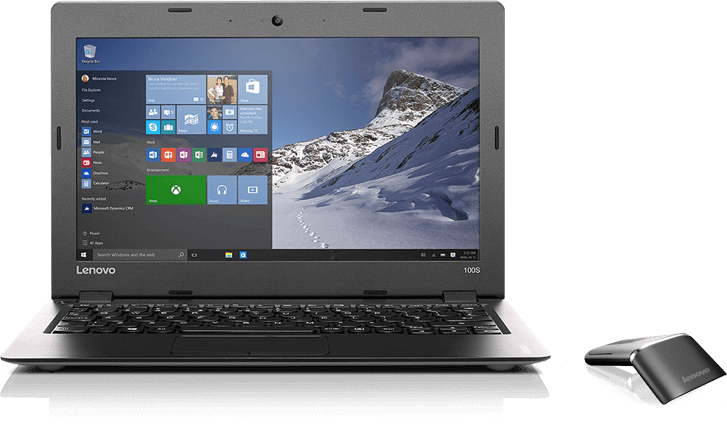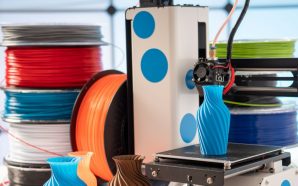There was a time, when $999 was thought of as the cutoff price for a budget laptop. How times, and expectations, have changed. At present, along with $50 Amazon Fire tablets and sub-$200 smartphones, it is possible to get a fairly purposeful PC experience for a lot lower than you may think.
The latest example of this new low-price laptop trend is the Lenovo Ideapad 100s, an 11-inch clam-shell laptop that sells for $178 in the US (£158 in the UK). It is among the most refined of the ultra-budget PCs, nevertheless it’s not the first.
The $200-and-less  laptop has been a rising category since mid-2014, anchored by products such as the $200 HP Stream 11 laptop and the Intel Compute Stick, a tiny desktop PC that can be bought for as little as $119 on Amazon and Meegopad Stick, which retails for 80$, all run Windows 10 and Intel Atom or Celeron processors, and are meant primarily for internet browsing and cloud apps (notice the very small amount of onboard storage, ranging from 8GB to 32GB).
The benefit is, unlike an equally priced Chromebook (a simple laptop running Google’s Chrome Operating System, which is basically the Chrome internet browser and little else), you’ll be able to set up and run common Windows software, such as image editing applications or alternate net browsers, so long as they will fit on the small hard drives. You will not be doing professional-level picture editing or enjoying the latest computer games, however at these prices, there’s virtually no good reason to go for a Chrome OS system instead when you only have less than $200 to spend.
With a colourful chassis (our model was vibrant red) that does not really feel too flimsy, and a typically excellent Lenovo keyboard design, this might simply be the clear winner in the ultra-budget class, if not for one problem. The touchpad here isn’t a simple clickpad-style model, as seen in the HP Stream 11 and almost every other laptop out there at present. Instead, it is an older design with separate left and right mouse buttons. However more importantly, the older touchpad design doesn’t currently support common gestures such as two-finger scrolling. For somebody who does lots of reading on-line, this may be a deal breaker, but you will have to evaluate for your self if the superb keyboard makes up for it.
Features and design

The challenge of any ultra-budget laptop is to feel and appear like it costs just a little more than it really does. Nobody is anticipating a uni-body aluminum chassis or sleek edge-to-edge glass over the display — but a flimsy hinge, a lid that bends and flexes whenever you move it, or a creaky body that feels like it will not stand up to even modest handling is not worth it at any price.
Lenovo avoids these missteps by constructing the 100s into a body that is slightly bigger and thicker than some other eleven-inch laptops, giving the system some protective bulk. The sturdy hinges additionally fold back a full 180 degrees to lie flat, so that you get plenty of helpful viewing angles. The matte red outer colour, which covers the back of the lid and the underside panel, is fingerprint-resistant, and the darker red colour additionally seems more upscale than the shiny black plastic on so many budget laptops.
Inside, the keyboard retains the same fundamental design as most other Lenovo laptops, with broadly spaced island-style keys that curve out just a bit on the bottom on each key, providing you with a bit of extra usable surface to hit. It is miles beyond the keyboard on HP’s Stream 11, for example.

The touchpad, however, is the one biggest stumbling block for the 100s. The pad loses worthwhile surface area by breaking its left and right mouse click functions out into separate physical buttons. It is a model of touchpad you hardly ever see any more, and for good reason. The pad here is also not set up for multi-touch gestures. That is important to note, as the usual two-finger scroll will not work, nor will tapping two fingers on the pad for a right-click action. It makes the system tougher to use when scrolling down lengthy pdfs, and it is a deficiency to seriously contemplate before buying.
You can also anticipate a lot from the display on an ultra-budget computer, though the basic 1,366×768 display here is okay for the price. It has a delightful matte finish that keeps glare to a minimum, but it is also restricted to limited viewing angles compared to the IPS (in-plane switching) displays on costlier laptops, which implies that the picture will get washed out quickly when you view the display from side angles.
Connections, performance and battery

Whereas the thicker chassis could fit in additional ports, you are limited to a budget-feeling pair of USB 2.0 ports, an HDMI output and a micro-SD card slot. Faster USB 3.0 and a full-size SD card slot would be have been useful, but a reach considering the price. One of the USB ports will most probably be used for an external mouse to make up for the laborious-to-use touchpad.
The one option offered right now’s the chassis color, in white, red, blue or silver. All models include the identical Intel Atom Z3735 CPU, 2GB of RAM and 32GB of SSD storage, which matches up with other ultra-budget laptops.
In benchmark testing with different low-cost Intel Atom and Celeron systems, the Lenovo 100s hung around the center of the pack. To get a significant boost in performance, you will need to look towards something like the Surface 3, the Atom-powered entry level model of Microsoft’s Surface line, which uses a faster Atom processor and extra RAM, but also costs more than twice as much, even with out including a keyboard cover. In hands-on testing, the 100s ran nicely when used for casual web surfing and on-line tasks, however it’s important to keep a few best practices in mind — particularly that Microsoft’s own browsers, Edge and Internet Explorer, are likely to run much smoother on low-power Windows laptops.
Battery life was a pleasing shock in the Lenovo 100s. The system ran for 11 hours and 17 minutes on our offline video playback battery drain test, which is near MacBook territory, and for 9 hours and 57 minutes in an online streaming playback test. The HP Stream 11 ran for 7 hours and 58 mins in the offline mode, and the Surface 3 for 7 hours 41 minutes. The benefit in all these instances is that Intel’s lower-performance CPUs are virtually always very efficient at sipping battery power, so these systems tend to run for a very long time on a single charge.
Conclusion
Spending less than $200 on a laptop is a surprisingly viable option right now, and for those who primarily use Facebook, Gmail, Twitter, Netflix and Amazon (or your own list of mail, social media, streaming video and on-line shopping tools), a laptop with an Intel Atom processor, low-res screen and paltry 32GB of storage might very well be all you need.
Of the current ultra-budget options, the overall design and build quality of the Lenovo Ideapad 100s is our favourite, but the dated, non-gesture-supporting touchpad could be a deal breaker in case you plan to scroll by lengthy on-line articles or Facebook feeds. If the next generation of 100s swaps in a modern touchpad, it will get our highest budget-laptop recommendation.














… [Trackback]
[…] Read More: latestgadgets.tech/2015/12/08/review-lenovo-ideapad-100s/ […]